Choosing the proper work boots for the job is much easier when you know which styles are available.
In this article, I’ll show you the range of work boots available so that you’ll know exactly the style to look for your next job.
Mukluks for a construction job? Thinking about buying linesman boots with a wedge sole? Not after today.
Table of Contents
24 Types of Work Boots
1. Logger Boots
Logger boots are the ideal choice when you’re working on uneven terrain and made a name for themselves in, you guessed it, the logging industry.
Loggers provide excellent ankle support, which is vital when you’re climbing over logs, and have a prominent heel that allows you to gain a better grip when you’re clambering over branches.
You can find loggers in soft toe, comp toe, and steel toe to match your needs. If you suffer from plantar fasciitis, the higher heel on a logger can be a pain, so you’ll need insoles.
2. Lineman Boots
Linesman boots are perfectly designed for climbing, thanks to their high arch and heel.
Linesmen, or anyone who spends much of their day up a ladder, will find these boots the ideal choice. A high shaft protects your ankle and calf, and the thick, abrasive sole adds grip when climbing.
You use the middle of your foot often when on a ladder, and the raised arch and deeper heel are perfect for keeping stability while standing on rungs. Look no further than a pair of Nicks Boots Lineman Classics for premium linesman boots.
You’ll be hard pressed to find better boots than Nicks for customization and build quality. The Linesman classic is a boot that’s engineered for climbing, with a Vibram sole and lineman patch for added grip. Made to last, the Lineman Classic is an absolute beast of a boot.
3. Wedge Sole
Wedge sole boots are easily identifiable by their completely flat outsole, a feature that is extremely handy when you can’t afford to catch your heel at work. A wedge sole would suit ironworkers who need a flat, stable base for their feet.
Uneven or muddy ground is a wedge sole’s worst enemy. You’ll want to wear these types of boots on hard, flat surfaces.
Thanks to their thicker soles, wedge boots can absorb a lot of impact, so they’re ideal for wearing for long periods of time.
The Carolina Amp Lo 6 Work Boot is a comfortable, EH-rated work boot that’s a perfect example of a wedge sole boot.
The Amp Lo is a great work boot that keeps you moving all day with an extra thick pillow-cushioned footbed sitting on a wedge sole. This soft toe boot isn’t built for heavy industry but is ideal for electricians, thanks to its EH-rating and superb grip.
4. Moc Toe
Moc toe boots come with classic-looking piping around the toe box that’s reminiscent of moccasins.
You can find moc toe dress boots, but the work boot variants, such as the Thorogood American Heritage 6” Moc Toe Work Boot, are an extremely popular choice. They’ll handle most jobs thanks to their comfort, slip-resistant sole, and ability to handle poor weather conditions.
Moc toe boots are often noticeably more comfortable than other work boots and can have a much quicker breaking-in period, making them ideal for wearing straight out of the box.
The Thorogood Moc Toe is a great work boot, plus it’s union-made in the USA. The leather is thick, the sole is durable and offers slip resistance, and because it’s unlined, you won’t have to contend as much with sweaty feet.
5. Hiker
Work boots that have adopted some of the characteristics of a hiker boot actually make a lot of sense. They’re often lighter, more breathable, and still offer the same level of protection.
A pair of hiker work boots like the Red Wing TruHiker come with a steel toe for added protection, the excellent ankle support you’d expect from a hiking boot, and offer great grip on wet and slippery surfaces.
If you’re looking for boots with more flexibility and better grip when on muddy or uneven ground, a hiker work boot can be an upgrade to your work boot.
If you’re looking for lightweight protection, there’s a lot to like about the TruHiker. Combining the best of two styles, you’ll find the TurHiker to be breathable, light, and comfortable. It’s also waterproof, EH-rated, and comes with a protective steel toe, making it well suited to most work environments.
6. Packer
Named after the early pioneers and their pack animals who moved supplies across America, the packer boot is a hybrid work boot that’s just as useful on horseback as on rocky ground.
The packer boot is designed to keep you moving, regardless of the terrain. Cowboy boots are great, right up until you need to start scrambling over things. Work boots are vital right up until you’re falling off your horse.
The result? The versatile and underrated packer boot. If you need excellent grip and a tighter fit than a cowboy boot, Nicks Boots Classic Packer is a premium option that lasts for years.
Described as a workhorse boot that’ll last for decades, the Classic Packer comes with all you’d expect from a Nicks boot and more. The Packer packs a punch with a Vibram sole and a cowboy heel, making it perfect for being on foot or in the saddle. They also look phenomenal, which always helps.
7. Cowboy
Cowboy boots have been a mainstay of the American workforce for over a century, and there’s no reason they won’t be just as popular in another hundred years.
Cowboy boots are ideal for cattle work, ranch, or farm, and while they look cooler than pretty much every other work boot, they’re functional too.
The higher shaft will protect your calves when riding, and they’re easy to get your feet out of when things go south. The Ariat Circuit Patriot Western Boot is a cowboy boot full of modern technology but still retains the classic look. Even out of the box, these boots look meaner than a Dutton.
Ariat’s Circuit Patriot cowboy boot looks like an All-American classic with an awesome scoured leather upper but has all the comfort and durability of a modern boot. A Duratread heel and Goodyear welt construction add to the style and longevity of the boots.
8. Roper
Not all cowboys are attached to their horses, and a Roper boot is an ideal alternative for working on the farm or ranch, especially when you’re on foot.
That’s not to say you can’t ride wearing ropers—the shorter heel makes them ideal for quick dismounts, but the shorter shaft invites more chafing over time than a traditional cowboy boot.
Roper boots make great work boots. They’re comfortable, resilient, and look great. The Ariat Heritage Roper Boot is a classic example of a roper boot that’s perfect for outdoor work.
Don’t let the simple design fool you. The Heritage Roper boot, with its rubber sole and forked shaft, is a rugged work boot that also looks great with casual wear. An excellent boot for wearing on the farm, the Heritage Roper is as comfortable as a cowboy boot, and its versatility is one of its charms.
9. Chelsea
Chelsea boots are laceless and easy to slip on and off. They’re also great for when you’re switching between the office and worksite, as they’re smart-looking boots.
Chelsea boots have either a flat sole or a low profile heel, making them great for wearing all day. An elastic side panel on the shaft allows you to slip Chelsea boots on easily, but they need to be a snug fit because they don’t have laces.
The upper on Chelsea boots is usually made of one piece of leather, and they’re unsuitable for more uneven terrain where you’ll need the extra tightness that lacing up provides.
10. Muck Boot
Muck boots come in various sizes and shapes, from shoe, ankle-high, and calf-high, but all have one thing in common—they keep your feet dry.
Most Muck boots often have a breathable lining inside and come with a neoprene bootie inside the foot area for insane waterproofing.
A Muck boot will keep you dry and warm if you work in wet or muddy conditions or ankle-deep in water all day. The grip on a Muck boot is excellent, and they’re a common sight on farms where your feet can get bogged down.
11. Wellington
The precursor to the Muck boot, the Wellington, is usually constructed using rubber. Wellington boots are ideal for wet, muddy conditions and can last for years.
You can buy wellingtons with a waterproof leather upper if rubber isn’t your thing, and you can even find wellingtons with a steel toe. If you need all-around protection, the Wolverine Floorhand Steel Toe Wellington can protect you from the elements and impacts.
For those jobs where you need to stay dry and know your feet are protected, a standard Wellington isn’t enough. Wolverine’s Floorhand, with its steel toe, keeps your toes safe from any heavy impacts, while its rubber sole and waterproof leather shaft gives you all the waterproofing you’d expect from a Wellington.
12. Work shoes
A work boot that provides protection for your feet doesn’t have to be ugly, especially if you’re going to be in meetings or dealing with customers.
A smart-looking work shoe needs to have the grip, comfort, and protective qualities you’d expect from a work boot, with the added benefit of looking professional.
If you need to look smart on the job, a work shoe is an excellent alternative to a work boot. The Florsheim Coronis Steel Toe Oxford will easily pass muster in an office environment but still has the steel toe protection of a boot. You’re covered from every angle.
A 100% leather Oxford dress shoe with a subtle steel toe for when you’re moving from the office to the shop floor, the Florsheim Coronis looks good enough to wear with a suit. You’ll probably not wear these when you’re on the tools, but they’re hard to beat for safety and style and will meet standards wherever you work.
13. Sneaker
Casual dress at work is more about comfort and ease of movement, and there’s rarely anything more comfortable than slipping on a pair of sneakers.
Work sneakers are available in steel toe, though they are more often seen with a lighter comp toe to reduce the weight. More flexible, easier to move around in, and more breathable than leather boots, sneakers are a perfect option for working indoors.
Outdoor, muddy work will soon ruin work sneakers, but many, like the Carhartt Nano Sneaker Boot, are lightweight, EH-rated, and will offer all the protection you’ll need.
There’s nothing casual about these safety sneakers. They’re built with hard work and protection in mind. Take the lightest breathable features of a sneaker and add a strong carbon composite toe, and you’re working in comfort and safety. Moving from work to an evening meal without changing boots couldn’t be easier.
14. Monkey Boot
You’re unlikely to find many monkey boots on site unless you’re still rocking the 1940s Soviet look. Oddly, after a revival during the punk era due to their similar appearance to Doc Martens, monkey boots became a very popular work boot in South America.
This stylish, snub-nosed work boot became popular due to its efficient use of leather. While you can wear monkey boots for work, they’re so hard to get hold of that it’s probably not worth it.
They’re becoming a bit of a collector’s item too, so if a boot connoisseur sees you working construction in them, they’ll probably have a heart attack.
15. Chukka
Chukka boots are lace-up ankle boots with a much smarter appearance than many work boots. You’ll usually find chukka boots with leather or suede upper, though for a work option, I’d choose leather.
Chukkas have either a crepe, leather, or wedge sole, all of which work well on a work boot, and they’re incredibly comfortable when you’re on your feet all day.
If you’re moving from office to worksite, chukkas are an intelligent choice as they don’t look out of place in either environment. Chukkas have a lower shaft, and while it makes for a sleeker-looking boot, there’s less ankle protection.
16. Combat Boots
Combat boots must be hard-wearing, sturdy, and comfortable—everything you need in a work boot.
If you’re thinking of wearing your combat boots to work, they’ll need outsoles that maintain grip and ankle support and, ideally, be waterproof. Combat boots come with either a flat or slightly raised sole, as you’d find on hikers.
Ankle support is vital when wearing combat boots, and many have at least an 8” shaft to keep your ankles well positioned.
17. Duck
Working outside in freezing, raid-soaked conditions quickly becomes grim to endure, especially when you find your “waterproof” boots leak like the Titanic. What you need is a pair of duck boots.
Duck boots keep out water, keep in the heat, and have an excellent outsole built for wet and snowy weather. Duck boots have a shorter shaft than wellingtons and make use of both rubber and leather to create a superb wet-weather work boot.
Well insulated, with a rugged rubber outsole, duck boots often come with a slight heel, which helps with grip in icy conditions. Duck boots should be high on your shopping list if you struggle to stay warm outdoors in winter.
18. Mukluk
If you’re working in freezing conditions, where keeping warm is paramount, then the famous Mukluk boot should be on your list.
Viable at temperatures of -40 °F, yes, that’s -40, mukluk boots have climbed Everest and were first worn by the Inuit and Yupik peoples in Alaska, which should tell you all you need to know about their heat-retaining properties.
If your job keeps you outside in weather that even reindeer turn their nose up at, a pair of Steger Mukluks will have you sweating in your boots.
Mukluks are a very specific type of footwear; you’ll only need them if you’re working in ridiculously cold temperatures. No other footwear looks anything like Mukluks, but then again, most boots can’t handle -40 degrees. If the cold weather is making life hard, these classic boots are a proven winner.
19. Service Boot
Service boots differ a lot from combat boots, as they’re more stylized, usually with a welted construction.
Where combat boots have thick, rugged soles designed for more challenging conditions, service boots usually have a lower-profile sole. A great example of a sturdy service boot is the famous Red Wing Heritage Iron Ranger, which has a sleek Vibram mini-lug outsole with superb grip.
Service boots don’t have a steel or comp toe, so they’re less suited to roles where you need protection from heavy objects.
They take longer to break in than an angry stallion, but they can last you a lifetime. Easily the most popular Red Wing boot available, the Iron Ranger is crafted from thick leather, has a unique look, and has impeccable heritage. Like fine wine, they’ll only improve with age.
20. Hip waders
There’s no sadder sight than wading through water in your wellingtons, only to see the water pouring into your boots. You’ll need something more specialized for marshy ground or anywhere with standing water.
Hip boots are great for wading through water, and as they reach almost the crotch area, you’ll stay warm and dry.
Thanks to their thick rubber construction, hip boots are suitable for use in fishing industries, and they’re also commonplace where there are chemicals around the workplace.
21. Engineer
Engineer boots have a long history dating back to the 1930s. With a look that’s part cowboy boot and part roper, engineer boots are pull-on boots with buckles, usually at the mid-foot and the top of the shaft.
Wildly popular with motorcyclists, engineer boots have a raised block heel that’s great for biking, but they’re versatile enough to be a solid work boot.
Engineer boots are easy to get on and off, and the two distinctive buckles help keep them snug, which adds to the ankle support.
22. Jodhpur
Not to be mistaken for the baggy pants riders can wear, jodhpur boots are a more formal work boot with a low heel and a plain toe.
The one-piece vamp makes for a smart work boot that’s similar in appearance to a Chelsea boot, though jodhpurs have a buckle at the mid-foot similar to that on an engineer boot rather than the elastic panel you’d find on a Chelsea boot.
A Jodhpur is an excellent alternative if you’re a fan of Chelsea boots but need them to feel a bit more secure. Unsurprisingly, they’re also ideal for working on horseback all day.
23. Hunting Boot
Hunting boots can be an option as a work boot as they’re invariably waterproof and have excellent ankle support.
If your work involves being outside in adverse conditions, hunting boots will keep your feet dry, although they’re not suited for extreme cold and rarely come with a steel or comp toe.
The Irish Setter Elk Tracker Hunting Boot is a rugged hunting boot that can transition into a work boot. With excellent traction and a waterproof leather upper, these boots are suited for working outdoors, and they’re typical of a hunting boot, with a high shaft and great ankle support.
Despite being crammed with modern tech, the Irish Setter Hunting Boot looks just as it should, an old-fashioned, hard-wearing hunting boot ready for anything. Incredibly breathable thanks to a Goretex lining and 3M Thinsulate, you’ll be able to put a real shift in wearing these boots.
24. Tanker
An uncommon boot to see every day, but there’s a lot to recommend the tanker boot as your everyday work boot.
They were designed for military personnel to wear when operating tanks or other tracked vehicles, but they’ll be just as effective if you work on heavy machinery.
A boot that was influenced by General George S. Patton, the tanker boot is still in use in the military today but has all the protective qualities you’d need in a work boot. There’s no better choice if you’re up to your eyes in mud daily.
Tanker boots need to be easy to take off when they’re covered in mud, so use buckles rather than laces, much like an engineer boot.
Boots, Boots, and More Boots
I hope you’ve enjoyed reading this article. It was a lot of fun looking into the various styles of work boots available.
The large variety of work boot styles available emphasizes just how important it is to match the right boot to your working conditions.
Everything from the sole of your boots to the materials used in the upper affects their use.
From a wedge sole to a high-heeled logger boot, a rubber wellington boot to a leather cowboy boot, getting the style right will help your boots to do the job you need and make your working life much easier.
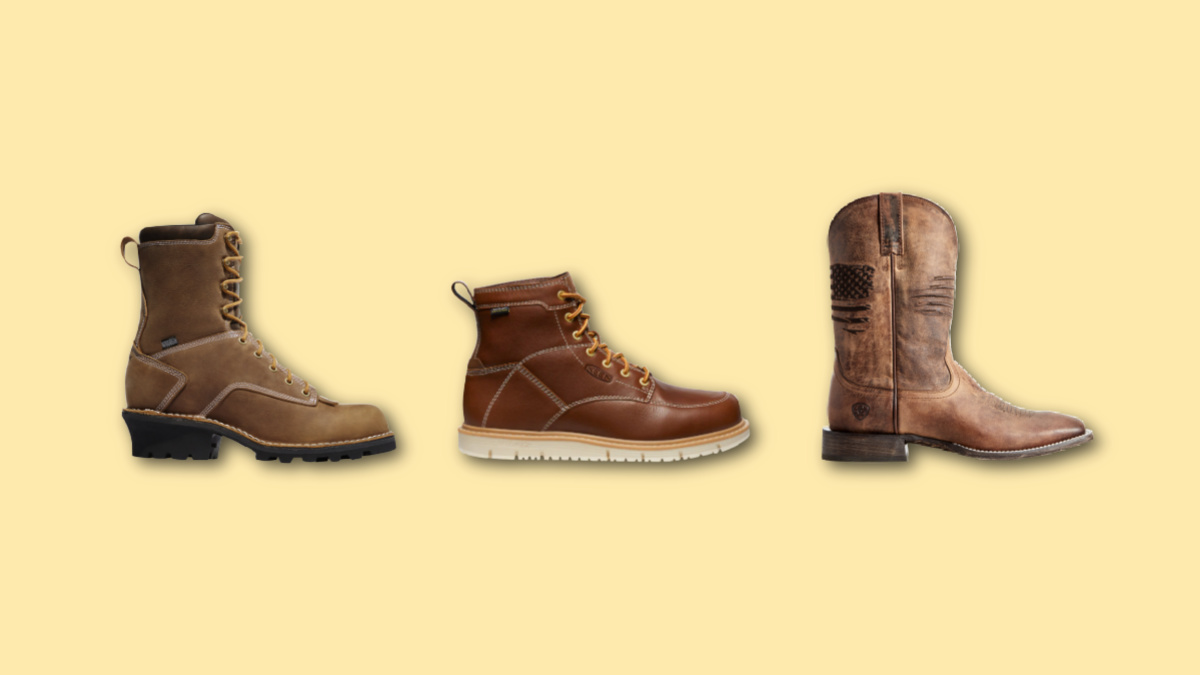
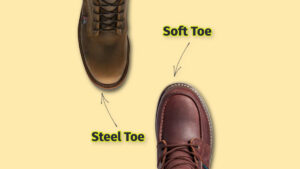
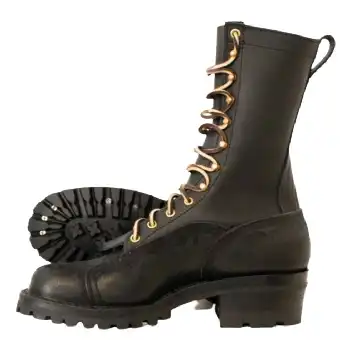
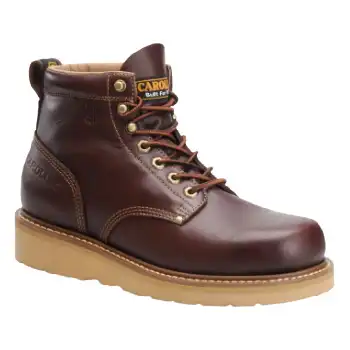
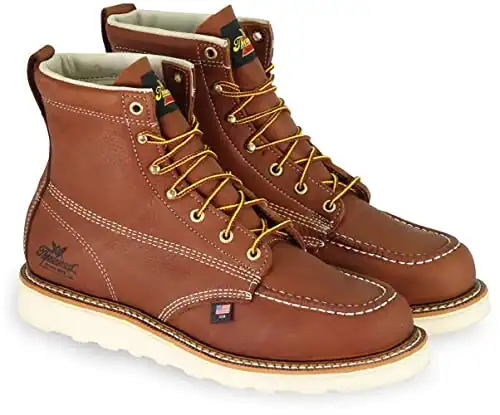
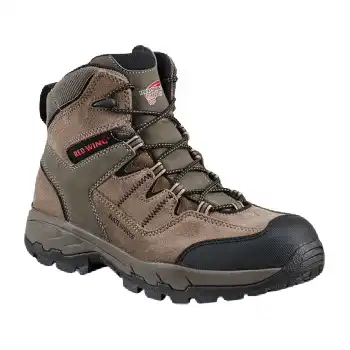
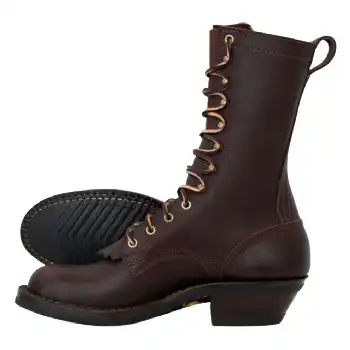
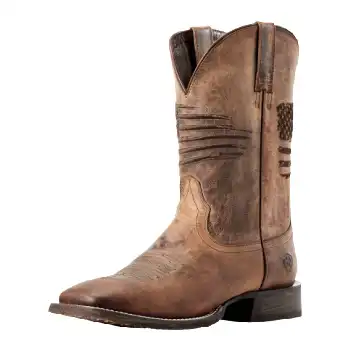
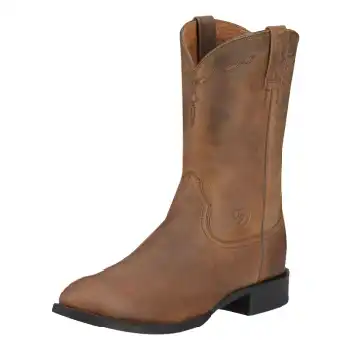
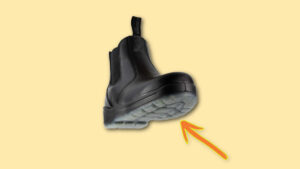
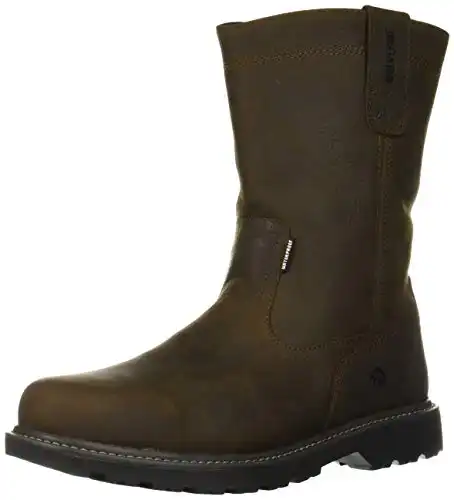
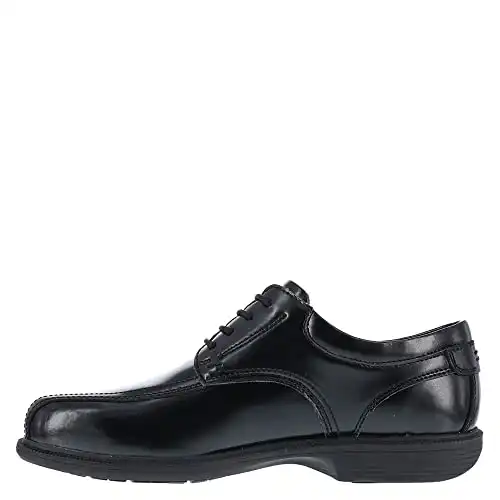
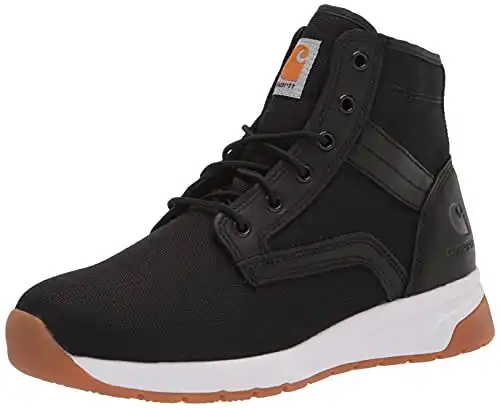
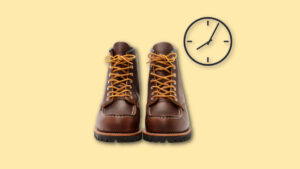
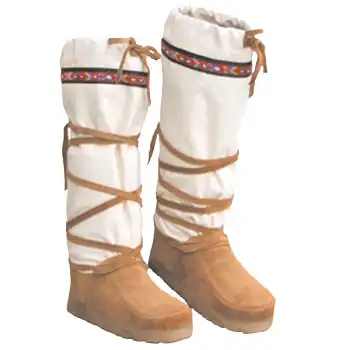
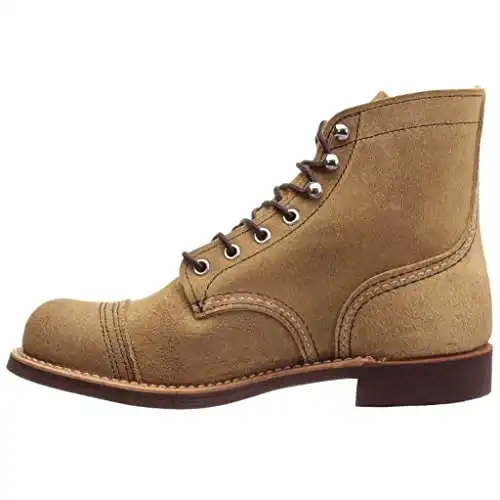
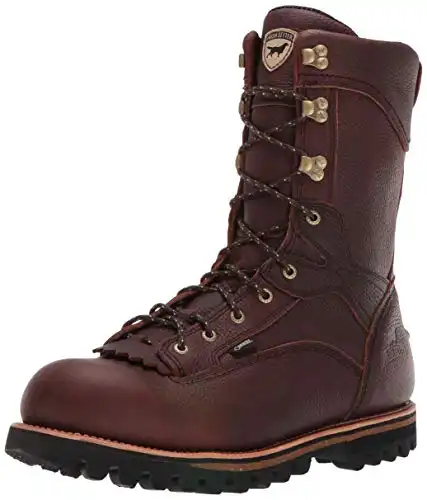

Join the Discussion